 1987 Peugeot 205 I (20A/C, facelift 1987) Dimensions, Size & Specs
1987 Peugeot 205 I (20A/C, facelift 1987) Dimensions, Size & SpecsMeasurements of the 1987 Peugeot 205 I, engineered for optimal performance and comfort
| Dimensions | |
|---|---|
| Length: | 3705 mm145.9 in12.2 ft |
| Width: | 1560-1570 mm61.4-61.8 in5.1-5.2 ft |
| Height: | 1355-1375 mm53.3-54.1 in4.4-4.5 ft |
| Trunk Capacity: | 215-298 liter7.6-10.5 cu ft |
| Trunk Capacity (Max): | 565-595 liter20.0-21.0 cu ft |
| Weight Specifications | |
| Curb Weight: | 760-925 kg1676-2039 lbs |
| Maximal permitted Weight: | 1140-1325 kg2513-2921 lbs |
| Tire Specifications | |
| Rims Sizes: |
|
| Tire Sizes: |
|
The Peugeot 205 I, facelifted in 1987, represents one of the most iconic and practical hatchbacks of its era, produced from 1987 to 1998. This French compact car combines efficient design with versatile usage, appealing to urban drivers and enthusiasts alike. The 205 I measures 3705 mm (145.9 inches) in length, positioning it firmly within the small hatchback segment, allowing easy maneuverability and parking in city environments. Its width ranges from 1560 to 1570 mm (61.4 to 61.8 inches), while the height varies between 1355 and 1375 mm (53.3 to 54.1 inches), providing a comfortable interior space relative to its footprint. Weighing between 760 and 925 kilograms (1676 to 2039 pounds), depending on equipment and configuration, the 205 I balances lightweight agility with structural stability. The maximum permissible weight spans 1140 to 1325 kilograms (2513 to 2922 pounds), ensuring compliance with safety and performance standards. Luggage capacity ranges from 215 to 298 liters (7.6 to 10.5 cubic feet) with seats up, expanding significantly to 565 to 595 liters (19.9 to 21 cubic feet) when the rear seats are folded, catering well to weekend getaways or daily shopping needs. The car rides on 13- and 14-inch rims, equipped with a variety of tire sizes including 135/80 SR13, 155/70 R14, and 185/60 R14 among others, providing options to balance comfort, grip, and sporty handling. The Peugeot 205 I facelift stint is notable for its blend of compact dimensions, efficient use of interior space, and weight economy, exemplifying the clever packaging that defined late-1980s hatchbacks. These traits still make it a reference point for size comparison among compact European hatchbacks, reflecting its enduring legacy in automotive history.
Discover the standout features that make the 1987 Peugeot 205 I a leader in its class
Have a question? Please check our knowledgebase first.
The Peugeot 205 I facelifted in 1987 has a length of 3705 mm (145.9 inches), a width ranging from 1560 mm to 1570 mm (61.4 to 61.8 inches), and a height between 1355 mm and 1375 mm (53.3 to 54.1 inches). These compact dimensions place the 205 I firmly in the small hatchback category, making it an agile car ideal for urban driving and maneuvering in tight spaces. Its relatively low height contributes to a sporty appearance, while the width offers optimal road grip and cabin comfort considering the car's size. The compact external measurements also contribute to improved fuel economy and parking convenience.
The Peugeot 205 I facelift, produced from 1987 to 1998, has a curb weight ranging from 760 kg to 925 kg (1676 to 2037 lbs), depending on the specific variant and equipment level. The maximum permissible weight (gross vehicle weight) ranges from 1140 kg to 1325 kg (2513 to 2920 lbs). These weights reflect the car’s lightweight design, which helps in achieving responsive handling and better fuel efficiency. The variance in weight is influenced by different trim and engine options, as well as optional accessories. The relatively light curb weight is one reason the Peugeot 205 has been widely praised for its nimble character and sporty driving dynamics.
The Peugeot 205 I provides a practical luggage capacity for a small hatchback. With the rear seats in the upright position, the boot can hold between 215 liters and 298 liters (7.6 to 10.5 cubic feet) of cargo. When the rear seats are folded down, the luggage capacity expands significantly to a range of 565 liters to 595 liters (19.9 to 21 cubic feet). This flexible storage space allows owners to carry larger items or increase cargo volume for trips and daily errands, demonstrating the practical design Peugeot incorporated despite the 205's compact footprint.
The Peugeot 205 I facelift supports rim sizes of 13 and 14 inches, catering to different model specifications and driver preferences. Tire sizes include a variety of options such as 135/80 SR13, 145/80 SR13, 155/70 R14, 155/70 SR13, 165/70 HR13, 165/70 R13, 165/70 SR13, and 185/60 R14. These tire sizes offer a good balance of grip, comfort, and handling performance suitable for a small hatchback built for versatility. Owners often choose tire sizes depending on driving conditions, performance requirements, and aesthetic preferences, but all listed sizes maintain the original safety and driving characteristics intended by Peugeot.
Yes, the Peugeot 205 I fits comfortably into a standard garage. Most single-car garages measure approximately 2.4 to 3 meters in width (7.9 to 9.8 feet), 4.8 to 6 meters in length (15.7 to 19.7 feet), and about 2.1 to 2.4 meters (6.9 to 7.9 feet) in height. Given the Peugeot 205 I's length of 3705 mm (1.7 meters wider) and width between 1560 mm and 1570 mm, there is ample clearance in width and length. The vehicle's height at roughly 1.36 meters is also well below typical garage ceiling height, ensuring easy parking with room for opening doors and storage. This makes the 205 practical for urban households with standard residential garages.
The Peugeot 205 I facelift introduced in 1987 maintained largely the same compact dimensions as the original 205 launched in 1983. The length, width, and height saw minimal changes, preserving the car’s small, lightweight, and agile character. Subtle refinements such as slight adjustments in width from 1560 mm to 1570 mm and minor height variations enhanced the car’s aerodynamic profile and interior space efficiency. Overall, the facelift focused more on styling and mechanical upgrades rather than radical shifts in size, meaning owners of earlier 205s wouldn't experience much of a dimension difference but instead improved aesthetics and features.
The Peugeot 205 I is very competitive in size compared to its contemporaries in the small hatchback segment of the late 1980s and 1990s. Cars like the Volkswagen Polo Mk2, Ford Fiesta Mk2, and Renault 5 had similar length dimensions ranging from around 3.6 to 3.8 meters (141.7 to 149.6 inches). The 205's width and height slightly vary but generally align with these models, placing it squarely in the compact hatchback category. Its relatively light curb weight and flexible cargo space also compare favorably, often making it a favorite among drivers seeking sporty handling and practicality in a subcompact car.
The Peugeot 205 I, despite its compact exterior, offers surprising interior space optimized for four passengers comfortably. The cabin design efficiently uses the modest width and height to maximize headroom and legroom within the front and rear seats. While more spacious than some rivals, the rear seating is best suited for smaller adults or children, as with many hatchbacks of its size. The 1987 facelift improved trim quality and ergonomics, enhancing driver and passenger comfort. Overall, the Peugeot 205 I balances compactness with sufficient interior comfort and practicality for urban commuting and short trips.
The Peugeot 205 I facelift (1987–1998) was offered with a variety of petrol and diesel engines, ranging from economical 1.0-liter units to more powerful 1.9-liter variants, including the famous 205 GTI performance models. Petrol engines typically ranged from 44 hp to about 130 hp for the sportier versions. Diesel options offered a focus on fuel economy for daily driving. The car's light weight (760–925 kg) helped deliver agile handling and brisk acceleration, especially in the GTI trims. This diverse engine lineup ensured that the 205 I catered to different types of drivers—from budget-conscious commuters to enthusiasts seeking sporty driving experiences.
While the dimensional differences between the Peugeot 205 I facelift and earlier models are minimal, the 1987 facelift introduced crucial improvements in styling, aerodynamics, and fit-and-finish. Owners appreciated the freshened exterior design, including revised bumpers, lighting, and trim details. These updates enhanced the car's visual appeal and modernized its presence without altering its core compact footprint, which balanced urban practicality with performance. Mechanically, facelift models often featured improved suspension and interior upgrades, making them more desirable. For those prioritizing style and slight refinements, the facelift model was a recommended choice.
Discover similar sized cars.
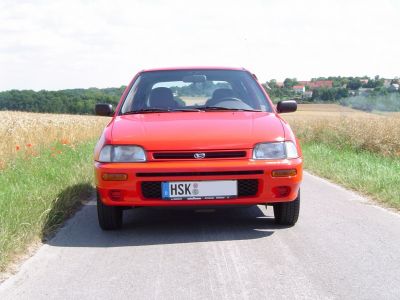
| Production: | 1993-2000 |
|---|---|
| Model Year: | 1993 |
| Length: | 3750-3780 mm147.6-148.8 in |
| Width: | 1620 mm63.8 in |
| Height: | 1390-1410 mm54.7-55.5 in |
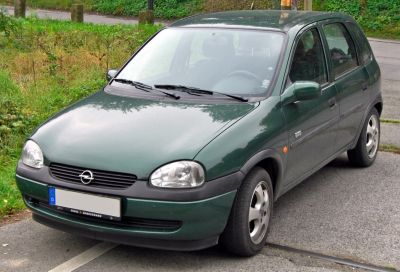
| Production: | 1997-2000 |
|---|---|
| Model Year: | 1997 |
| Length: | 3740 mm147.2 in |
| Width: | 1610 mm63.4 in |
| Height: | 1420 mm55.9 in |

| Production: | 1993-2000 |
|---|---|
| Model Year: | 1994 |
| Length: | 3740 mm147.2 in |
| Width: | 1610 mm63.4 in |
| Height: | 1420 mm55.9 in |

| Production: | 1993-2000 |
|---|---|
| Model Year: | 1993 |
| Length: | 3729 mm146.8 in |
| Width: | 1610 mm63.4 in |
| Height: | 1420 mm55.9 in |
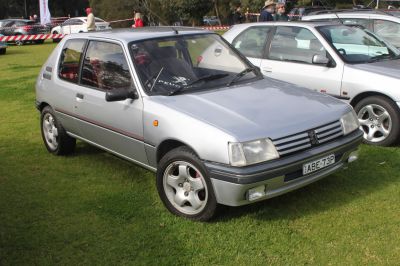
| Production: | 1987-1998 |
|---|---|
| Model Year: | 1983 |
| Length: | 3705 mm145.9 in |
| Width: | 1560-1572 mm61.4-61.9 in |
| Height: | 1355-1375 mm53.3-54.1 in |
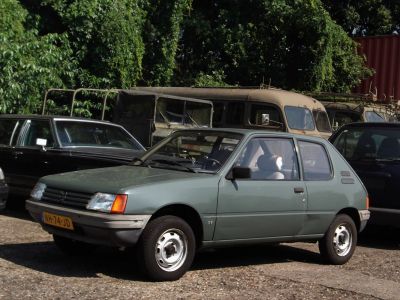
| Production: | 1983-1987 |
|---|---|
| Model Year: | 1983 |
| Length: | 3705 mm145.9 in |
| Width: | 1572 mm61.9 in |
| Height: | 1373 mm54.1 in |
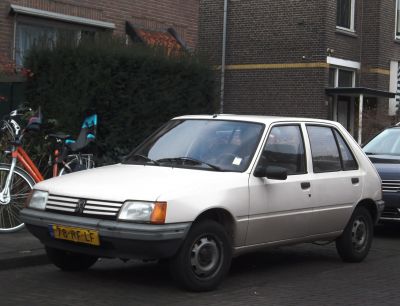
| Production: | 1983-1987 |
|---|---|
| Model Year: | 1983 |
| Length: | 3705 mm145.9 in |
| Width: | 1572 mm61.9 in |
| Height: | 1373 mm54.1 in |

| Production: | 1993-2000 |
|---|---|
| Model Year: | 1993 |
| Length: | 3740 mm147.2 in |
| Width: | 1610 mm63.4 in |
| Height: | 1420 mm55.9 in |
